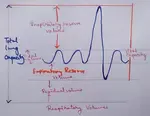Fertility of Soil
We will discuss here about the fertility of soil. We know that soil and water are needed to grow plants. But for their proper growth some other factors or elements are also necessary. They are obtained by the soil from manures and fertilisers.
Farmers often use compost manure and urea-fertiliser. The excreta of some animals like goat, sheep, cow, hen, etc. is also used to raise the fertility of the soil. Plants need nitrogen, phosphorus, iron, zinc, etc. for their growth which they receive from the soil. If there is a shortage of any one of these elements in the soil then, that should be fulfilled by applying appropriate manure or fertiliser. Thus plants grow in the soils with and without manure.
Farmers should know about deficiencies of the soil in their fields. There are laboratories for soil testing and farmers may utilise these laboratories. The deficiency can be overcome by adding suitable fertilisers.
There are some animals and insects that help the farmers in
fertilising their fields. They dig the soil and facitilate air and water to
enter it. Rabbits and rats dig the soil for their dwellings. Earthworms,
scorpions, ants, etc. break up the hard portions of the soil and make it soft.
The earthworm is known as the most faithful friend of the farmers.
Farmers plough their fields. The ploughing makes the soil fertile. It makes the soil turn over. It also helps in making the soil, fine and powdery.
Some green plants growing in the fields, serve the purpose of green manure. They are decayed in the soil and become useful manure. Hump is one of the green (plant) manures.
From Fertility of Soil to HOME PAGE
Recent Articles
-
Regulation of Respiration | Respiratory Centres | Inspiratory Area |
Oct 14, 25 12:13 AM
Respiratory Centre is the area that controls the rate of respiration and it is observed to be located in medulla oblongata and pons. Respiratory Centre has the following will dispersed components like… -
Explain Transport of Gases | External Respiration | Tissue Respiration
Oct 09, 25 11:35 PM
In humans gaseous exchange is completed in the following ways the steps are - External Respiration or Breathing - Breathing in false taking in of Oxygen and giving out of carbon dioxide in the body. M… -
Kind and Number of Teeth | Location of Teeth in Mouth | Care of Teeth
Sep 11, 25 12:52 AM
Kind and Number of Teeth -
The Gaseous Exchange | Transport of Oxygen | Haldane Effect |
Sep 10, 25 02:44 PM
Oxygen carrying capacity of blood is 20 ml for 100m but 3% of dissolved in plasma and 97% of the oxygen combines with haemoglobin to form a loose reversible Complex called oxyhaemoglobin and is transp… -
Respiratory Volumes and Capacities | Tidal Volume | Dead Space
Sep 10, 25 02:46 AM
Explain respiratory volumes and capacities: Tidal Volume - Tidal volume is the volume of air inspired or expired in relaxed or resting position. Amount of tidal volume is about 500 m and it consists o…






New! Comments
Have your say about what you just read! Leave me a comment in the box below.